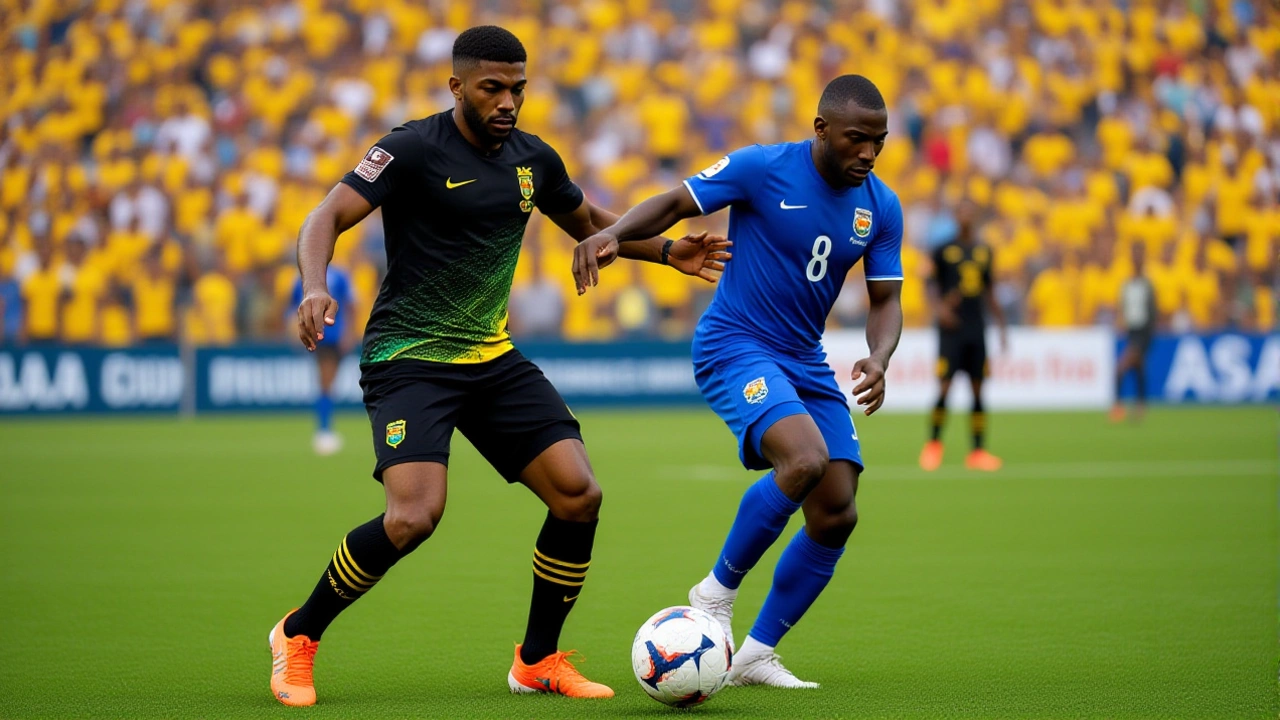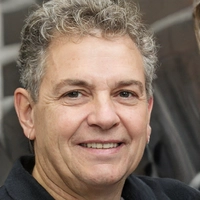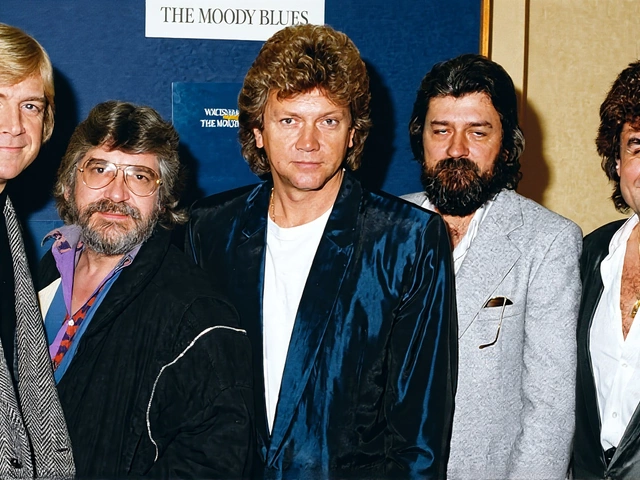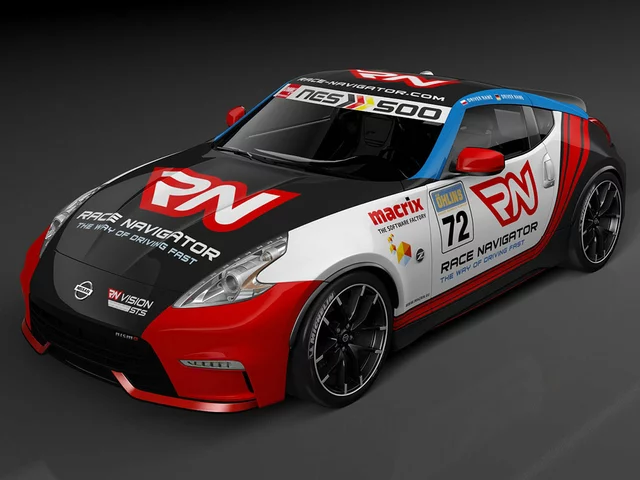On November 18, 2025, at Independence Park in Kingston, Jamaica, a quiet revolution unfolded on the pitch — not with fireworks or fanfare, but with silence. A 0-0 draw between Jamaica and Curaçao wasn’t just a result; it was a seismic shift in global football history. With that draw, the tiny Caribbean island nation of Curaçao, population roughly 165,000, became the smallest country ever to qualify for a men’s FIFA World Cup. No Iceland. No Wales. No Trinidad and Tobago. This was Curaçao — a place most people couldn’t find on a map without zooming in twice — punching its ticket to the 2026 World Cup.
A Blue Wave That Swelled Against All Odds
Curaçao, known locally as the ‘Blue Wave’ for their navy-blue kits, finished top of CONCACAF’s Group B with 12 points from six matches: three wins, three draws, zero losses, and a +10 goal difference. Jamaica, the Reggae Boyz, came in second with 11 points — one point short. Trinidad and Tobago finished third with nine, while Bermuda crashed out with zero. But this wasn’t just about points. It was about legacy. The match itself was tense, physical, and filled with near-misses. Jamaica hit the woodwork three times — once by Leon Bailey, twice more in frantic late attempts. In the 90'+10' minute, Curaçao’s Jeremy Antonisse fired a left-footed shot from the edge of the box, assisted by Leandro Bacuna. It sailed just over. A minute later, Jamaica’s John Russell was shown a second yellow card for a reckless challenge, reducing the hosts to ten men. Still, they couldn’t score. Not with the ball, not with headers, not with desperation. Not against Eloy Room, Curaçao’s veteran goalkeeper, who made five crucial saves, including a diving stop on a bobbling shot from Makana that looked destined for the net.The Man Behind the Miracle
This wasn’t luck. It was leadership. Guus Hiddink, the Dutch legend who once guided the Netherlands to the 2000 European Championship final and steered Chelsea to the 2009 FA Cup, took over Curaçao’s national team in 2023. He didn’t come for the paycheck. He came because he believed in the potential of a team written off by most. "They have heart," Hiddink said in his post-match interview, as captured by CBS Sports Golazo. "And heart beats talent when talent forgets why they play." Hiddink rebuilt the squad around discipline, structure, and a counterattacking system that exploited Jamaica’s aggression. He turned under-the-radar players from the Dutch lower leagues — like Antonisse and Bacuna — into heroes. He made Curaçao’s defense impenetrable: zero goals conceded in their final four qualifiers.
Why This Matters More Than the Points
Before 2026, the smallest nation to qualify for a men’s World Cup was Iceland, with a population of about 340,000 in 2018. Curaçao is less than half that size. To put it in perspective: the city of Breda in the Netherlands — a single town — has more people than the entire nation of Curaçao. And yet, they qualified ahead of Jamaica, a country with nearly double the population and a World Cup pedigree dating back to 1998. The significance isn’t just statistical. It’s symbolic. Curaçao became a full FIFA member in 2011 after the dissolution of the Netherlands Antilles in 2010. For 15 years, they were the forgotten team — the island that didn’t have a professional league, that struggled to field consistent squads, that played home matches in the Netherlands because their stadium in Willemstad didn’t meet FIFA standards. Now, they’re going to the World Cup.What Comes Next?
The 2026 FIFA World Cup, hosted jointly by the United States, Canada, and Mexico, kicks off on June 11, 2026. Curaçao will be drawn into one of the eight groups, likely facing heavyweights like Brazil, Spain, or Germany. They won’t be expected to advance. But they’ll be there — not as a footnote, not as a curiosity, but as a legitimate participant. For Curaçao’s youth, this changes everything. Kids who used to watch Dutch or Brazilian stars on YouTube now have heroes who look like them, who come from their streets. The island’s football academy, once underfunded, is already seeing a 40% surge in enrollment. Local businesses are donating gear. A new stadium is being planned in Willemstad, funded partly by diaspora contributions.
History Doesn’t Always Come With Crowds
The final whistle at Independence Park didn’t trigger a riot. There were no fireworks. No helicopters overhead. Just a quiet moment — fans hugging, players on their knees, Eloy Room pointing to the sky. A few hundred Curaçao supporters, many of whom flew in from the Netherlands and Aruba, sang their national anthem in unison. No one else was watching. Not really. But the world will remember. This is what football is supposed to be about. Not money. Not TV deals. Not corporate sponsorships. It’s about a small nation, with limited resources, refusing to be forgotten. And proving, against all logic, that size doesn’t define greatness.Frequently Asked Questions
How did Curaçao qualify for the World Cup with only 12 points?
Curaçao topped Group B in CONCACAF’s Third Round with 12 points from three wins and three draws — an unbeaten record. They finished one point ahead of Jamaica, who had one loss. The top three teams in the six-team group qualified directly for the 2026 World Cup. Curaçao’s defense was the key: they conceded just four goals in six matches, the best in the group.
Why is Curaçao considered smaller than Iceland?
Curaçao’s population is approximately 165,000, while Iceland’s was around 340,000 when they qualified for the 2018 World Cup. Even if you include only the eligible football-playing population (ages 15–35), Curaçao’s pool is less than half Iceland’s. This makes Curaçao the smallest sovereign nation by population to ever qualify for a men’s World Cup.
Who are the key players behind Curaçao’s success?
Goalkeeper Eloy Room anchored the defense with 11 clean sheets in his last 15 appearances. Midfielders Leandro Bacuna and Jeremy Antonisse provided creativity and discipline, while striker Jarno Lion scored crucial goals in qualifiers. Most players are based in the Netherlands, but represent Curaçao through heritage — a common pathway for small nations.
What’s the history of Curaçao’s football program?
Curaçao became a FIFA member in 2011 after the breakup of the Netherlands Antilles. Before that, players from the islands represented the Netherlands Antilles team, which never qualified for a World Cup. Since 2011, Curaçao has slowly built infrastructure, hired experienced coaches like Hiddink, and leveraged its Dutch ties to recruit talent. Their 2026 qualification is the culmination of 15 years of steady progress.
Will Curaçao play home games in the World Cup?
No. The 2026 World Cup is hosted only in the United States, Canada, and Mexico. Curaçao will play all their group stage matches in one of those countries. However, the island plans to build a new 15,000-seat stadium in Willemstad, funded by diaspora donations, to host future international matches and youth tournaments.
What impact will this have on Caribbean football?
Curaçao’s success could reshape how smaller Caribbean nations approach development. Countries like Suriname, Guyana, and St. Kitts may now see a path forward. CONCACAF is already discussing increased funding for youth academies in smaller members. For the first time, a tiny island didn’t just compete — it conquered. That’s a message that will echo from Kingston to Paramaribo.






Post A Comment